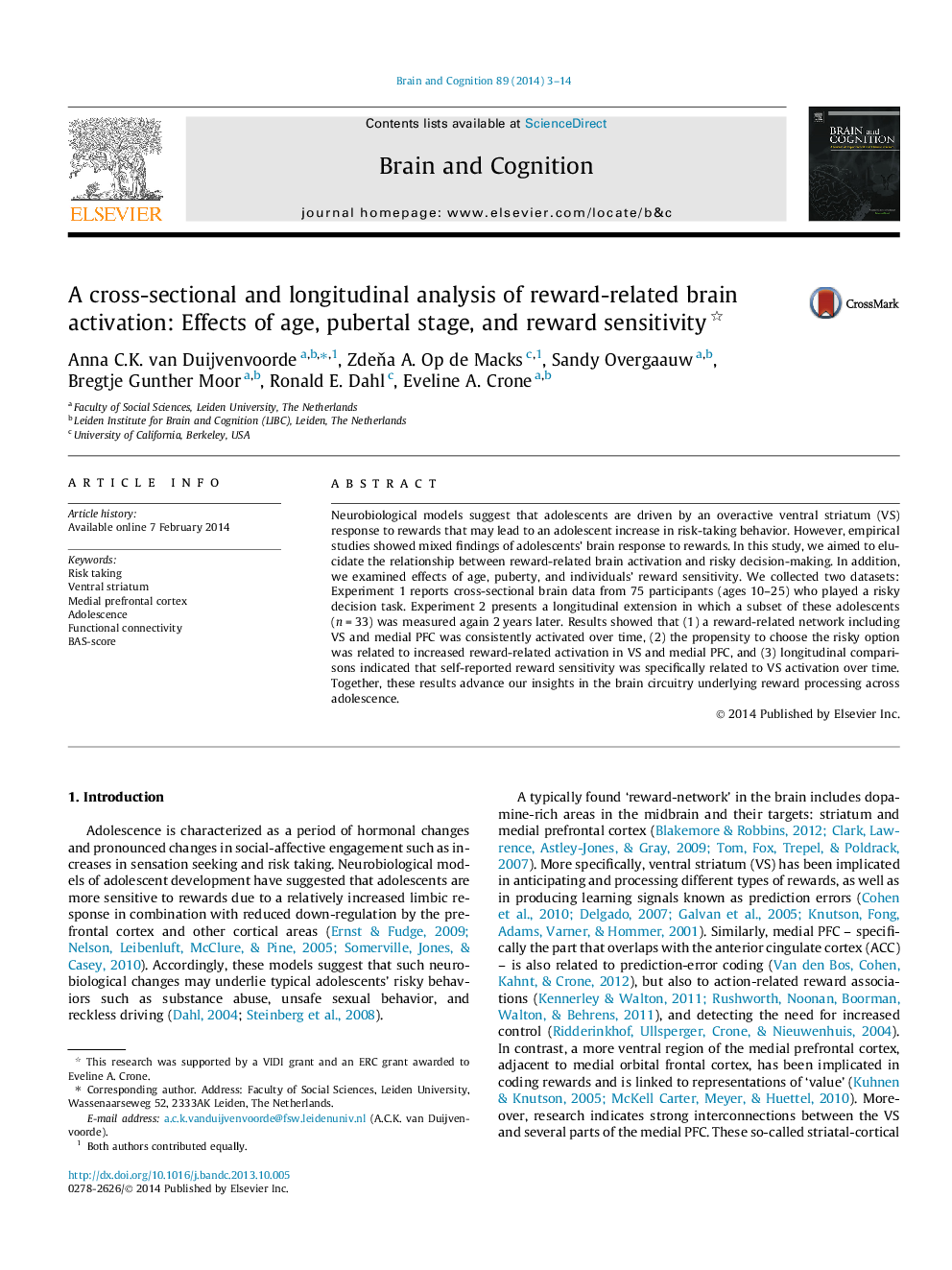| Article ID | Journal | Published Year | Pages | File Type |
|---|---|---|---|---|
| 924008 | Brain and Cognition | 2014 | 12 Pages |
•We studied adolescents’ reward-related neural responses and risky choice.•Cross-sectional reward-activation was positively related to risky choice.•Functional connectivity strength between striatum and insula related negatively to risky choice.•Reward regions such as striatum and medial PFC were consistently activated over time.•Longitudinal change in striatal reward-activation related to individual’s change in funseeking.
Neurobiological models suggest that adolescents are driven by an overactive ventral striatum (VS) response to rewards that may lead to an adolescent increase in risk-taking behavior. However, empirical studies showed mixed findings of adolescents’ brain response to rewards. In this study, we aimed to elucidate the relationship between reward-related brain activation and risky decision-making. In addition, we examined effects of age, puberty, and individuals’ reward sensitivity. We collected two datasets: Experiment 1 reports cross-sectional brain data from 75 participants (ages 10–25) who played a risky decision task. Experiment 2 presents a longitudinal extension in which a subset of these adolescents (n = 33) was measured again 2 years later. Results showed that (1) a reward-related network including VS and medial PFC was consistently activated over time, (2) the propensity to choose the risky option was related to increased reward-related activation in VS and medial PFC, and (3) longitudinal comparisons indicated that self-reported reward sensitivity was specifically related to VS activation over time. Together, these results advance our insights in the brain circuitry underlying reward processing across adolescence.
